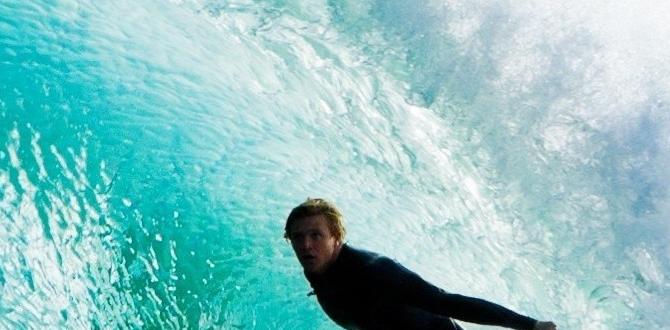Planning an Azores winter trip? Embrace fewer crowds and dramatic landscapes with our essential tips for packing, activities, and maximizing your comfort in this Atlantic paradise.
Dreaming of volcanic landscapes, lush green trails, and puffin sightings? The Azores might be calling your name! Many people think of the Azores as a sun-drenched summer destination, but visiting during winter unlocks a different kind of magic. Think fewer tourists, dramatic coastal views, and a cozy atmosphere perfect for exploration. It’s true, packing for the unpredictable Atlantic weather can feel a little daunting, but with the right preparation, your Azores winter trip can be incredibly rewarding and stress-free. This guide is here to help you navigate everything from what to wear to how to make the most of your time!
Azores Winter Trip Guide: Essential Tips for a Magical Off-Season Adventure
Visiting the Azores in winter is like discovering a well-kept secret. While the summer months buzz with activity, the winter offers a more serene and authentic experience. You’ll find stunning natural beauty, fascinating cultural experiences, and a chance to connect with the islands on a deeper level. But the Atlantic weather can be a bit wild, so knowing what to expect and how to prepare is key to a comfortable and enjoyable trip. Let’s dive into the essential tips to make your Azores winter getaway unforgettable!
When is Winter in the Azores?
In the Azores, winter officially runs from December through February, but the shoulder months of November and March often share similar weather patterns. This period is characterized by cooler temperatures, higher rainfall, and more wind compared to the summer. However, it’s important to remember that “winter” here doesn’t typically mean snow or freezing temperatures like on the European continent. The islands’ mid-Atlantic location keeps things relatively mild, though expect daily variations.
Understanding Azores Winter Weather
The Azores are known for their changeable weather. A common saying is you can experience “four seasons in one day.” This is especially true in winter. You might start your day with sunshine, see some rain showers in the afternoon, and enjoy a clear, starry night. Average temperatures in winter hover around 15°C (59°F) during the day, dropping to about 10°C (50°F) at night. Rainfall is more frequent, and winds can be brisk, particularly along the coast. However, these conditions often make for dramatic and breathtaking scenery, with powerful waves crashing against the dramatic volcanic coastlines.
Essential Packing Guide for Your Azores Winter Trip
Packing smartly is crucial for comfort when visiting the Azores in winter. The key is layering! This allows you to adjust your clothing as the weather changes throughout the day. Think versatile pieces that can be mixed and matched.
Clothing Layers: The Foundation of Your Wardrobe
This is your secret weapon against the unpredictable Atlantic climate. Start with a base layer that wicks away moisture, add insulating mid-layers, and top it off with a waterproof and windproof outer shell.
- Base Layers: Think thermal tops and leggings made from merino wool or synthetic materials. These are lightweight, breathable, and effective at keeping you warm without bulk.
- Mid Layers: Fleece jackets, softshell jackets, or warm sweaters are perfect for adding insulation. You can easily add or remove these as needed.
- Outer Layers: This is your shield against wind and rain. A waterproof and windproof jacket with a hood is non-negotiable. Look for breathable fabrics so you don’t get too clammy when active. A waterproof pair of trousers is also highly recommended, especially if you plan on hiking.
Footwear: Comfort and Protection
Your feet will thank you for choosing wisely. You’ll be doing a lot of exploring, often on uneven terrain, so sturdy and waterproof footwear is a must.
- Waterproof Hiking Boots: These are ideal for any outdoor activities, especially hiking. Ensure they have good ankle support and non-slip soles. Break them in before your trip to avoid blisters!
- Comfortable Walking Shoes: For days exploring towns or lighter activities, a comfortable, water-resistant pair of sneakers or walking shoes will suffice.
- Extra Socks: Pack plenty of warm, moisture-wicking socks (wool or synthetic). It’s a good idea to have at least one pair per day, plus a few extra.
Accessories: Don’t Forget These!
These small items can make a big difference in your overall comfort and preparedness.
- Waterproof Bag or Backpack Cover: To keep your essentials dry during rain showers.
- Hat, Scarf, and Gloves: Even if temperatures are mild, wind can make it feel much colder. A warm hat and gloves are essentials.
- Sunglasses and Sunscreen: Yes, even in winter! The sun can be surprisingly strong, especially with the reflection off the water. Protecting your eyes and skin is important.
- Reusable Water Bottle: Stay hydrated and reduce plastic waste.
- Small First-Aid Kit: For minor scrapes or blisters.
- Camera: To capture the stunning, moody winter landscapes.
Special Considerations for Comfort and Convenience
Travel is about enjoying yourself, and sometimes that means having solutions for specific needs. For those who require them, planning for adult diapers or child diapers is a smart move that can significantly reduce travel anxiety.
- Adult Diapers for Travel: If you use adult diapers for health reasons, long flights, or simply for peace of mind, packing an ample supply is recommended. Choose products designed for discretion and absorbency, like those explained by Wellness Diabetes, which focus on comfort and reliability for extended periods. Ensure you have enough for your entire trip, plus a buffer, as availability in smaller island shops might be limited.
- Child and Baby Diapers: Traveling with little ones requires extra planning. Pack a good stash of diapers, wipes, and changing supplies. Consider portable changing mats for on-the-go convenience. If you’re flying, many airlines are accommodating, but having your own readily available ensures comfort for your child throughout the journey.
Navigating the Azores in Winter: What to Do and See
Winter in the Azores offers a unique set of activities and experiences. While some summer-specific tours like whale watching might be less frequent or weather-dependent, many of the islands’ core attractions remain accessible and incredibly rewarding.
Embrace the Lush Greenery
Even in winter, the Azores are remarkably green due to their mild climate and frequent rain. Hiking trails are still beautiful, though you need to be prepared for muddy conditions.
- Hiking: Islands like São Miguel and Terceira offer stunning hiking opportunities. Trails like the one around Sete Cidades or Lagoa do Fogo on São Miguel are breathtaking, even under a blanket of clouds or with a sudden shower. Always check trail conditions beforehand and wear appropriate footwear. The official VisitAzores trails website is a great resource for maps and condition updates.
- Botanical Gardens: Explore the unique flora of the islands in places like the Terra Nostra Garden in Furnas (São Miguel) or the Monte Palace Tropical Garden in Funchal (Madeira, though the Azores have similar lush gardens). These offer a sheltered and colorful escape.
Soak in Natural Hot Springs
Winter is arguably the best time to experience the Azores’ natural hot springs. What could be more comforting than soaking in warm, mineral-rich waters while the Atlantic air cools your face?
- Furnas, São Miguel: Famous for its thermal pools, including the iron-rich pool at Terra Nostra Garden and the more natural pools at Poça da Dona Beija.
- Caldeira Velha, São Miguel: Features beautiful waterfalls cascading into warm pools, set amidst lush vegetation.
- Ponta da Ferraria, São Miguel: A unique thermal pool located in the ocean, heated by volcanic activity. It’s only accessible at low tide and can be quite warm due to freshwater mixing with seawater.
Remember to bring a dark-colored swimsuit, as the iron content in some waters can stain lighter fabrics.
Explore Island Towns and Culture
Winter is a perfect time to delve into the charming towns and cities of the Azores, discover local crafts, and enjoy delicious cuisine without the summer crowds.
- Ponta Delgada (São Miguel): The largest city, with a beautiful historic center, charming streets, museums, and great restaurants.
- Angra do Heroísmo (Terceira): A UNESCO World Heritage site, its colorful architecture and rich history are captivating.
- Local Markets: Visit local markets to sample regional produce, cheeses, and other delicacies.
- Museums and Churches: Learn about the islands’ maritime history, volcanic geology, and unique culture.
Whale and Dolphin Watching
While sightings are generally more prolific in warmer months, the larger baleen whales, like fin whales and humpback whales, are often present in the Azores during winter. Boat tours do operate, but they are highly dependent on sea conditions. It’s always best to book in advance and be prepared for potential cancellations due to weather.
Volcanic Landscapes and Geothermal Activity
The dramatic volcanic landscapes are a year-round attraction. Explore volcanic craters, fumaroles, and unique geological formations.
- Sete Cidades (São Miguel): The iconic twin lakes in a volcanic crater are stunning in any weather.
- Lagoa do Fogo (São Miguel): Another breathtaking crater lake, often shrouded in mist – adding to its mystical charm.
- Mount Pico (Pico Island): For experienced hikers, climbing Portugal’s highest mountain (weather permitting) offers unparalleled views.
Practical Tips for Your Azores Winter Trip
Beyond packing and activities, a few practical considerations can enhance your winter Azores experience.
Book Accommodation and Flights in Advance
While winter is the off-season, the Azores are a popular destination year-round. Booking accommodation and flights ahead of time, especially if traveling around holidays, will ensure better prices and availability.
Embrace Flexibility
As mentioned, weather can significantly impact plans, especially for outdoor activities and boat tours. Have a backup plan for days when the weather is less cooperative. Perhaps visit a museum, explore a town, or enjoy a longer, leisurely meal.
Rent a Car for Island Exploration
To truly experience the Azores, especially in winter when public transport might be less frequent, renting a car is highly recommended. It gives you the freedom to explore at your own pace and stop at scenic viewpoints. Ensure you are comfortable driving on winding roads and consider a vehicle with good traction.
For official road safety information from the Portuguese government, you can refer to resources provided by the Instituto da Mobilidade e dos Transportes (Institute of Mobility and Transport).
Stay Informed About Weather and Ferries
Check local weather forecasts regularly. Websites and apps like IPMA (Portuguese Institute for Sea and Atmosphere) are excellent resources. If you plan to island-hop using ferries, always check their schedules and operational status, as services can be suspended due to rough seas.
Learn a Few Portuguese Phrases
While many people in tourist areas speak English, knowing a few basic Portuguese phrases like “Olá” (Hello), “Obrigado/Obrigada” (Thank you – male/female), and “Por favor” (Please) is always appreciated and can enhance your interactions with locals.
Savor the Local Cuisine
Azorean cuisine is hearty and delicious. Don’t miss out on:
- Cozido das Furnas: A traditional stew cooked underground by volcanic heat in Furnas.
- Seafood: Fresh fish and shellfish are abundant.
- Azorean Cheeses: Particularly the Queijo São Jorge.
- Pineapples: Grown in greenhouses on São Miguel.
- Bolo Lêvedo: A slightly sweet, flat muffin-like bread.
Island Highlights for a Winter Visit
Each island offers unique charms, but here are a few top picks for a winter exploration:
São Miguel
The largest and most developed island, it’s a great starting point. You’ll find thermal springs, the iconic Sete Cidades and Lagoa do Fogo lakes, and the vibrant city of Ponta Delgada.
Terceira
Known for its UNESCO World Heritage city, Angra do Heroísmo, and its unique volcanic lava tubes and caves. The island has a rich history and colorful festivals (though most are in summer).
Pico
Home to mainland Portugal’s highest peak, Pico Mountain. Vineyards are a UNESCO World Heritage site. It’s also a prime location for whale watching, though winter conditions are a factor.
Faial
Famous for its marina in Horta, a popular stop for transatlantic sailors. The Capelinhos Volcano interpretation center offers a fascinating look at volcanic activity.
Sample Itinerary Outline: 7 Days in the Winter Azores
This is a sample itinerary and should be adapted based on your interests and the specific weather you encounter.
| Day | Island | Morning Activities | Afternoon Activities | Evening |
|---|---|---|---|---|
| 1 | São Miguel | Arrive at Ponta Delgada (PDL). Pick up rental car. Explore Ponta Delgada historic center. | Visit the pineapple plantations. Relax at a local cafe. | Dinner in Ponta Delgada. |
| 2 | São Miguel | Explore Sete Cidades crater and lakes. Hike around the rim (weather permitting). | Visit the Bocca do Inferno viewpoint. Stop by thermal Caldeira Velha. | Soak in Furnas thermal pools (Poça da Dona Beija). |
| 3 | São Miguel | Visit Lagoa do Fogo, enjoying its wild beauty. | Explore the coast near Nordeste, perhaps visiting the lighthouse. | Enjoy a traditional Cozido das Furnas dinner. |
| 4 | Terceira (Fly) | Fly from Ponta Delgada to Terceira (TER). Pick up rental car. Explore Angra do Heroísmo. | Visit Monte Brasil. Explore São Sebastião. | Dinner in Angra. |
| 5 | Terceira | Visit Algar do Carvão lava tube and the immensity of Gruta de Natal. | Explore the volcanic landscapes near Biscoitos and its natural swimming pools. | Enjoy local Terceirense cuisine. |
| 6 | São Miguel (Fly) | Fly back to São Miguel. Visit a tea plantation (Gorreana or Porto Formoso). | Last-minute souvenir shopping or revisit a favorite spot. | Farewell dinner in Ponta Delgada. |
| 7 | São Miguel | Depart from Ponta Delgada (PDL). | N/A | N/A |
Frequently Asked Questions (FAQ)
Is it a good idea to visit the Azores in winter?
Yes, it can be a fantastic idea! You’ll experience fewer crowds, potentially lower prices, dramatically beautiful landscapes, and a more authentic local feel. It’s perfect if you enjoy nature, hiking, and relaxing in thermal springs.
What is the weather like in the Azores in winter?
Winter in the Azores is mild but unpredictable. Expect temperatures around 10-15°C (50-59°F), frequent rain showers, and wind. It’s common to experience sunshine, rain, and cloudy spells all in one day.
What should I pack for an Azores winter trip?
Pack layers! Essential items include waterproof and windproof outer layers, warm sweaters or fleece, thermal base layers, waterproof hiking boots, extra socks, a hat, gloves, and a scarf. A swimsuit is also a must for the hot springs.
Are the Azores accessible in winter?
Yes, the islands are accessible. Flights operate year-round, and inter-island ferries and flights continue, though schedules can be reduced and are subject to cancellation due to weather. Renting a car is highly recommended for getting around.
Will I be able to hike in the Azores in winter?
Yes, many hiking trails remain open and are beautiful in winter. However, trails can be muddy and slippery, and some higher-altitude paths




